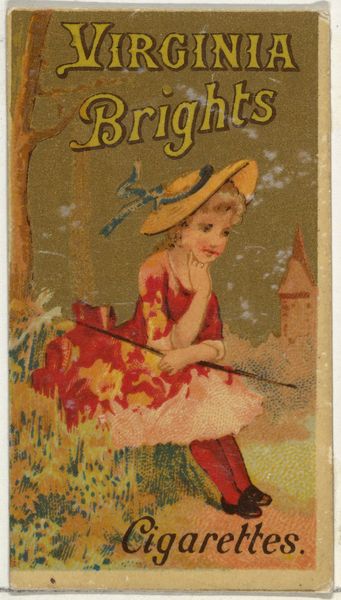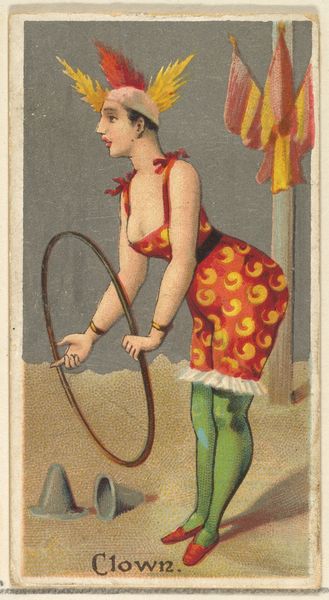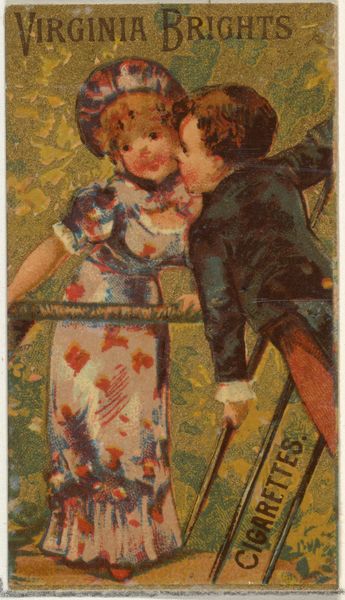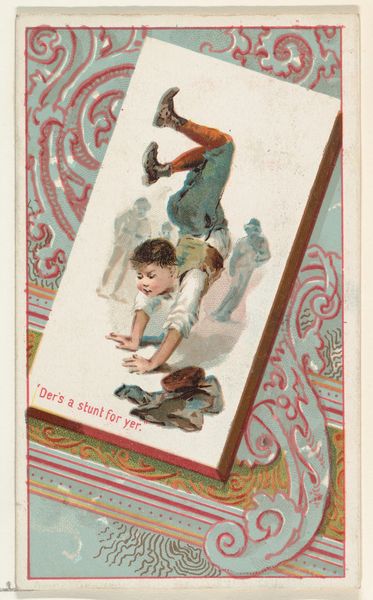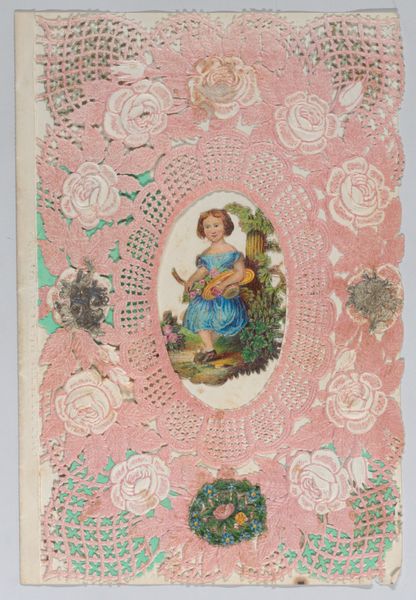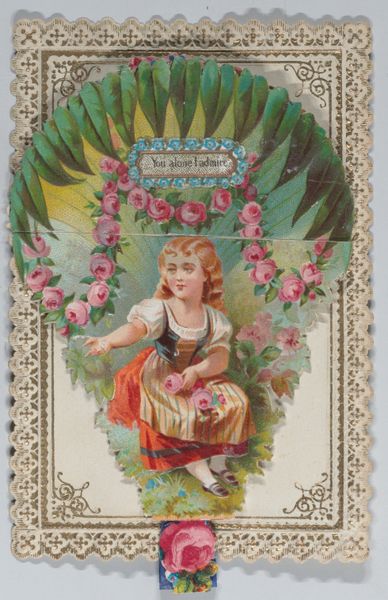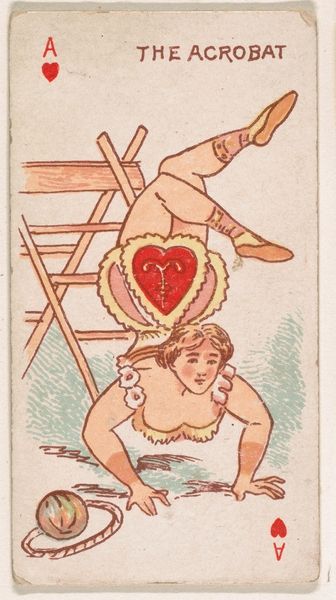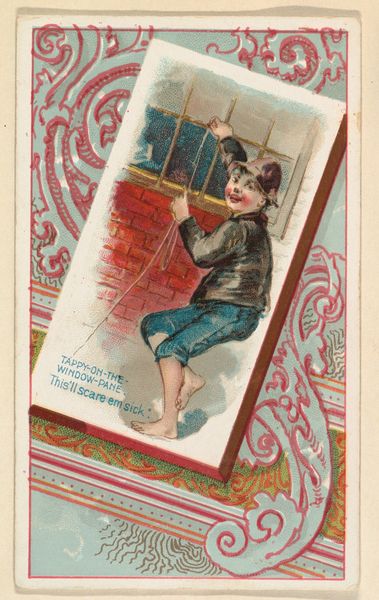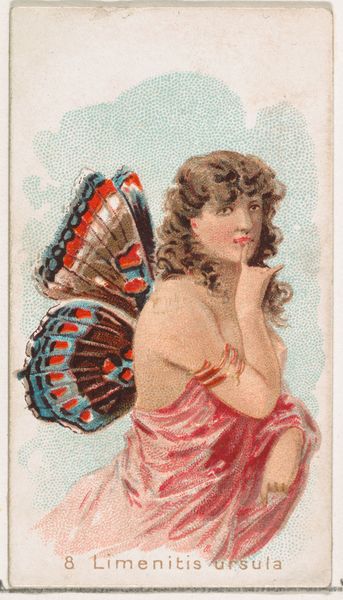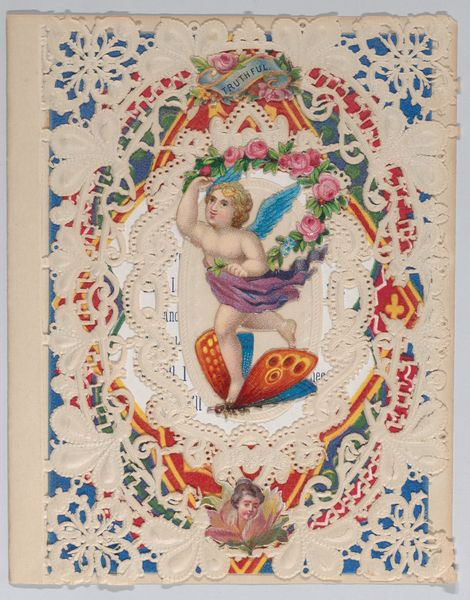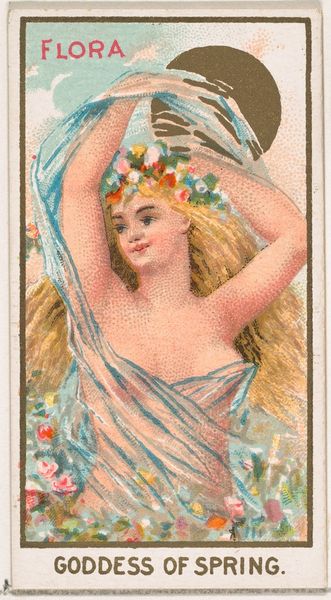
Dimensions: Width: 3 1/8 in. (8 cm) Length: 5 5/16 in. (13.5 cm)
Copyright: Public Domain
Editor: This is "Valentine - Mechanical - Cupid and Target," made around 1875, probably a print with watercolor. It’s so ornate, with little pink flowers bordering a target and cupid. What stands out to me is that it's literally a mechanical object meant to convey emotion. How can we understand the materials in relation to its message? Curator: The piece presents an interesting intersection between sentiment and the mechanization of the Victorian era. Consider the printmaking process, the mass production, and the potential for widespread distribution of this Valentine. Does it democratize love, or commodify it? Editor: That’s interesting. So, it’s not just about the cute imagery, but the actual means of production and consumption… the labor behind this romantic token? Curator: Precisely. The paper itself, the ink, the labor involved in printing and hand-coloring each card – all contribute to the overall meaning. Also, notice the materials are relatively cheap. Who was the target audience for these affordable tokens of affection? Was it aimed at the rising middle class? Editor: I never considered the economics of Valentine's Day before! Thinking about the materiality changes everything. It seems more like an industrial product than a unique piece of art meant for display. Curator: Yes, blurring the line between "art" and a manufactured object intended for exchange. And what about the cupid operating the "mechanical" target? Isn't love itself sometimes viewed as a kind of system? A societal mechanism? Editor: Wow. It is more complex than I initially assumed. Now I can see that studying its means of production can reveal so much more than what is depicted. Thanks! Curator: Likewise. By focusing on the materials and mode of fabrication, the seemingly sentimental Valentine reveals its place in the culture of production and social exchange of the 19th century.
Comments
No comments
Be the first to comment and join the conversation on the ultimate creative platform.
